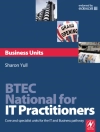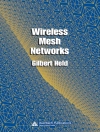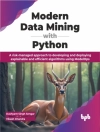Businesses today want actionable insights into their data—they want their data to reveal itself to them in a natural and user–friendly form. What could be more natural than human language? Natural–language search is at the center of a storm of ever–increasing web–driven demand for human–computer communication and information access. SQL Server 2008 provides the tools to take advantage of the features of its built–in enterprise–level natural–language search engine in the form of integrated full–text search (i FTS). i FTS uses text–aware relational queries to provide your users with fast access to content. Whether you want to set up an enterprise–wide Internet or intranet search engine or create less ambitious natural–language search applications, this book will teach you how to get the most out of SQL Server 2008 i FTS:
- Introducing powerful i FTS features in SQL Server, such as the FREETEXT and CONTAINS predicates, custom thesauruses, and stop lists
- Showing you how to optimize full–text query performance through features like full–text indexes and i Filters
- Providing examples that help you understand and apply the power of i FTS in your daily projects
表中的内容
SQL Server Full-Text Search.- Administration.- Basic and Advanced Queries.- Client Applications.- Multilingual Searching.- Indexing BLOBs.- Stoplists.- Thesauruses.- i FTS Dynamic Management Views and Functions.- Filters.- Advanced Search Techniques.
关于作者
Hilary Cotter has been involved in information technology for more than 19 years. He has worked as a web and database consultant specializing in search solutions, and he has helped several major sites tune their e-commerce sites. Hilary has answered over 6, 000 questions on the Microsoft newsgroups and founded, with Chris Crowe, both IISFAQ.com, the world’s largest resource for information on Internet Information Server, and Index Server FAQ.com, which averages 1.2 million hits per month. In 2001, Microsoft recognized him with a Microsoft SQL Server ‘Most Valuable Professional’ award. Hilary received his bachelor’s of applied science degree in mechanical engineering from the University of Toronto. He subsequently studied economics at the University of Calgary and computer science at the University of California, Berkeley.












